The Hidden Dangers of Floodwater: What Every Driver Must Know
Follow these expert safety tips to avoid life-threatening mistakes when roads suddenly become rivers
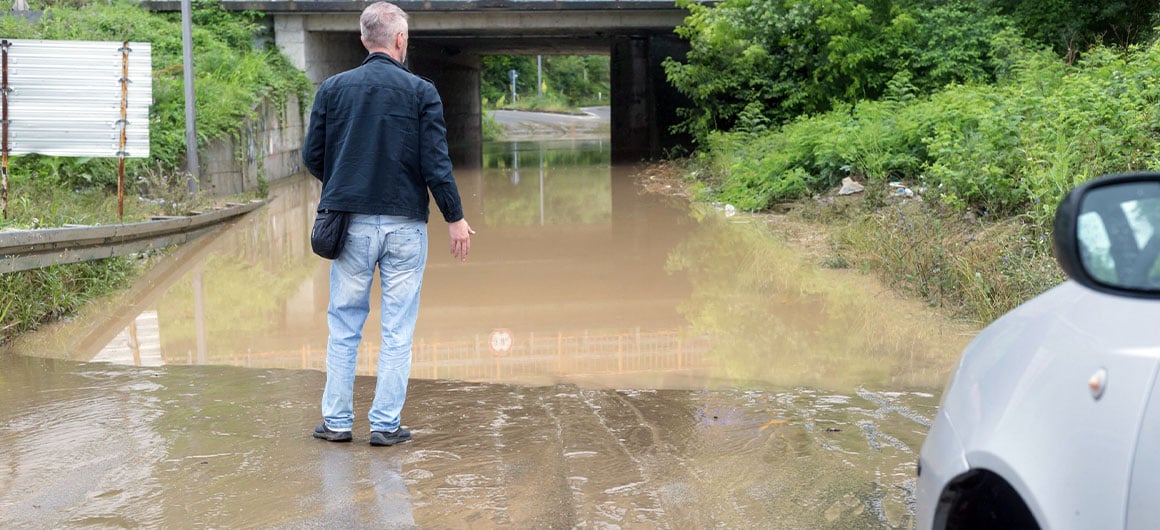

Picture this: You’re driving after a heavy rainstorm when you reach a section of road submerged in water.
Do you try to drive through it?
Even if it seems shallow, even if you’re behind the wheel of a massive SUV, even if you know this stretch of road like the back of your hand, there’s only one answer: No.
Flooding is the second-deadliest weather hazard after heat, with most flood-related fatalities occurring when drivers attempt to navigate a vehicle through dangerous floodwaters, according to NOAA’s National Severe Storms Laboratory.
With the right knowledge—especially an understanding of water’s sheer power—these tragedies can be prevented.
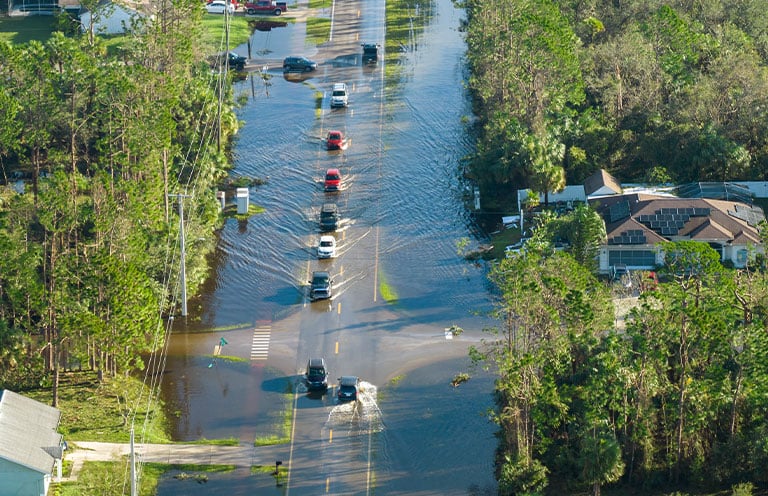
Flooding vs. flash flooding
Flooding and flash flooding share a basic similarity: Both involve water rising over normally dry land. The main difference, however, is how quickly they develop.
Flooding is generally a long-duration event, lasting for days or even weeks. In contrast, flash flooding is far more rapid—often within hours or even minutes—making it far more dangerous. Flash floods are triggered by extreme rainfall, rapid snowmelt, or a sudden failure of a natural or man-made barrier, such as a dam, levee, or ice jam. Their speed and sheer force make flash floods the deadliest type of flooding, often leaving people with little time to react.
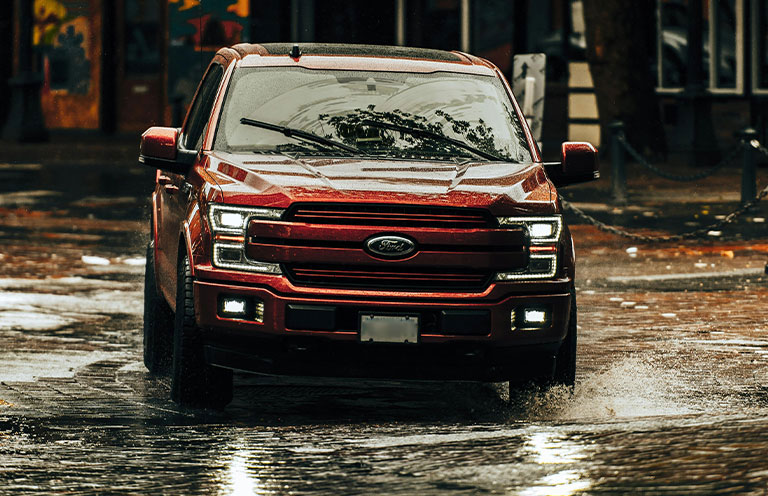
The dangers of floodwater
Many people underestimate the power of water, especially when it’s moving. To help put it in perspective, consider these facts:
- Six inches of fast-moving floodwater can knock over an adult and make most vehicles difficult to control.
- A mere 12 inches of water can float most cars.
- It takes only 2 feet of rushing water to carry away SUVs and pickup trucks.
The main danger with driving through floodwater is the unknown. What may seem passable could hide serious hazards. You simply cannot see what’s happening beneath the surface. The road condition may have eroded, the water depth may be deeper than it appears, and submerged dangers such as downed power lines or debris may be present.
There’s also a significant risk of severe vehicle damage that could render your car unsafe or undrivable. Floodwater can infiltrate the engine, transmission, and drivetrain, leading to costly repairs. Electrical systems—including dashboard controls, airbags, and antilock brakes—may fail. Additionally, prolonged water exposure can corrode important car parts such as wiring, door mechanisms, and fasteners. Even if the car appears functional afterward, water damage can lead to long-term issues such as persistent electrical faults, mold growth, and a lingering musty odor.
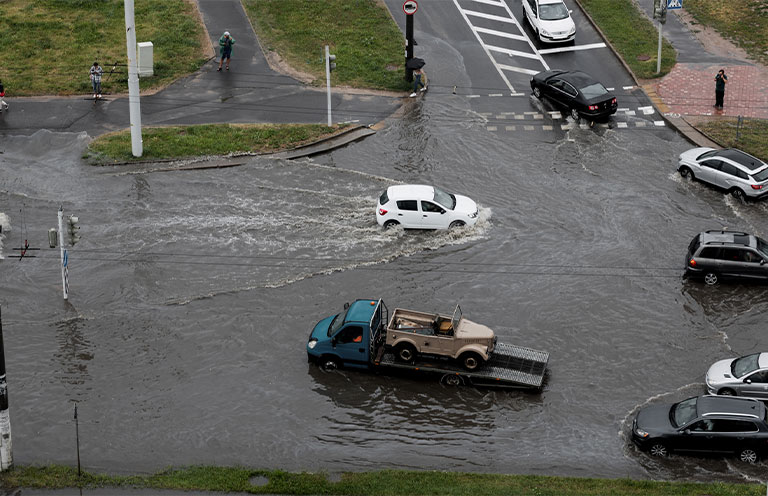
What to do when roads flood
More than 20 years ago, the National Weather Service introduced a public flood safety campaign called Turn Around, Don’t Drown. It’s a simple, memorable message that highlights the number-one rule to follow if you come face to face with flooding.
Here are the key safety measures to follow, as recommended by the National Weather Service, if you ever encounter floodwater while driving or walking:
Avoid it entirely.
Simply turn back, and find a detour. Never take a chance that a flooded road is safe to cross. Remember, just 6 inches of moving water can knock you off your feet, and a foot of water can sweep away a small car. Plus, you can’t be certain of the conditions beneath the surface.
Find higher ground.
Stay away from flood-prone areas, including dips, low spots, and underpasses.
Park smart.
Never park or camp near streams, rivers, or drainage areas, especially if rain is in the forecast.
Use extra caution at night.
Flood dangers are harder to detect in the dark, so take extra care.
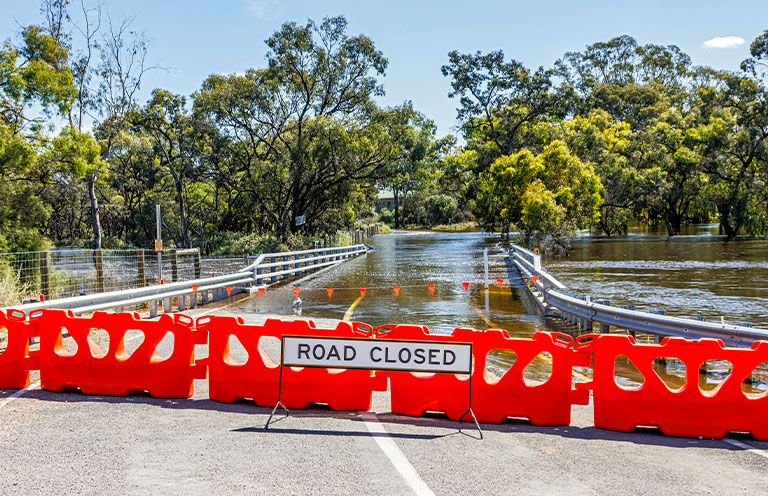
Never ignore signs.
Signs and blockades exist for a reason, so don’t attempt to drive around them. If an area is closed off, respect the closure.
Abandon your vehicle if necessary.
If floodwater stalls your car, exit immediately and move to higher ground. Flash floods can develop within minutes, so never attempt to outrun rising water; seek safety immediately. Don’t put your life on the line with the risk of rising water overwhelming your car and sweeping it away with you inside.
Stay informed.
Monitor trusted weather sources regularly for updates. Consider signing up for emergency weather alerts via your phone or a weather radio to receive real-time updates. If a Flood Warning or Flash Flood Warning is issued, heed evacuation orders or move to higher ground immediately.
For additional lifesaving information, check out the NOAA National Severe Storms Laboratory’s Severe Weather 101: Flood Basics.
